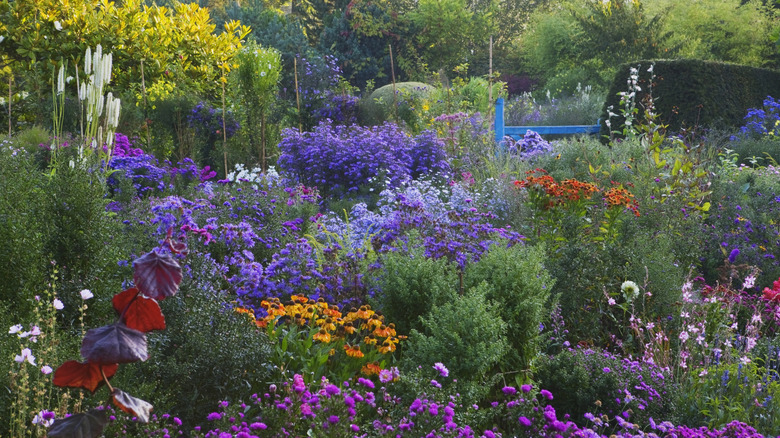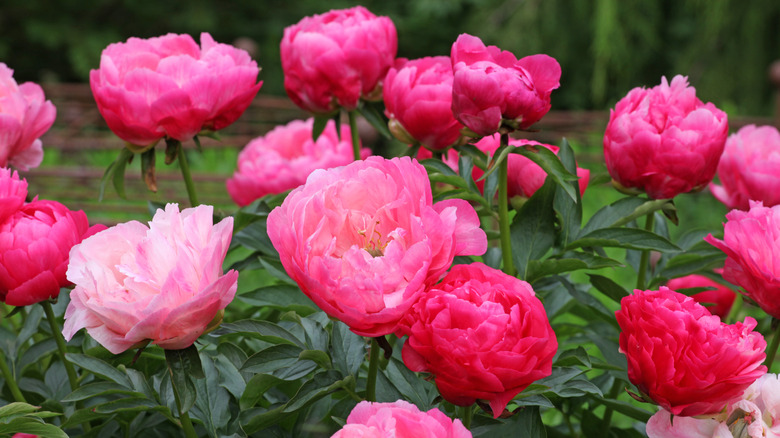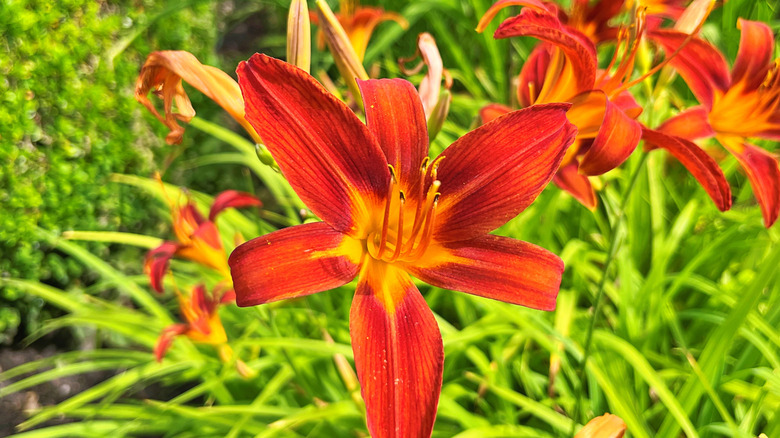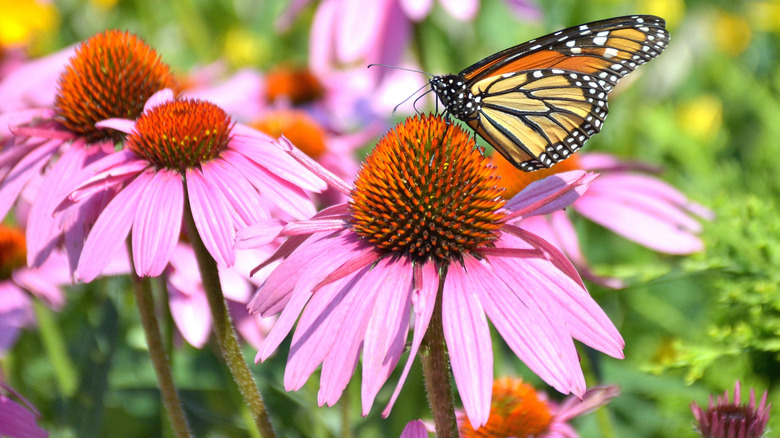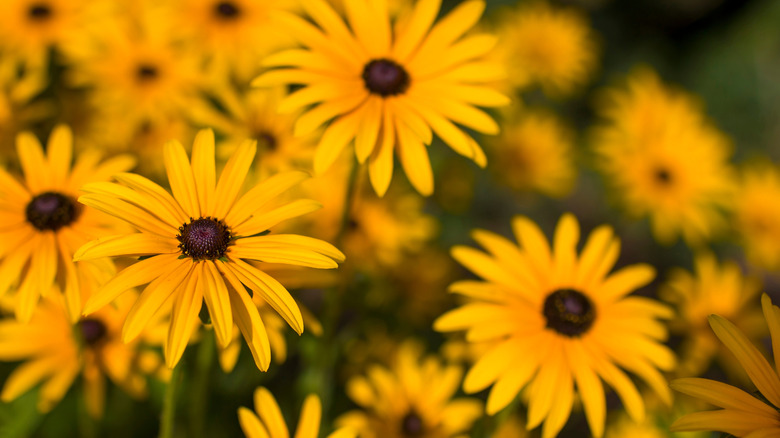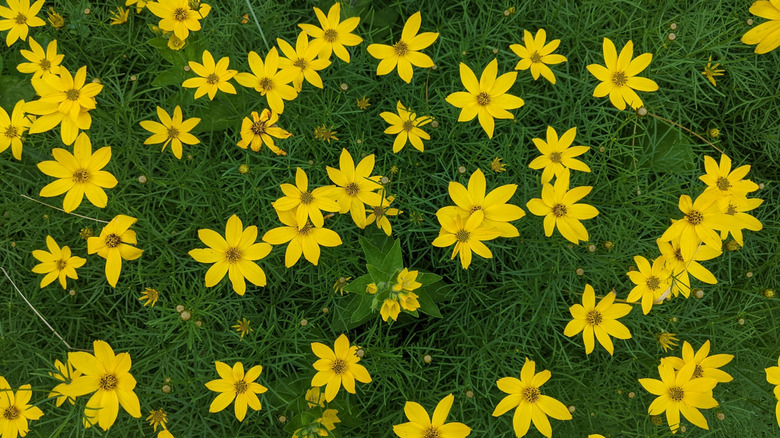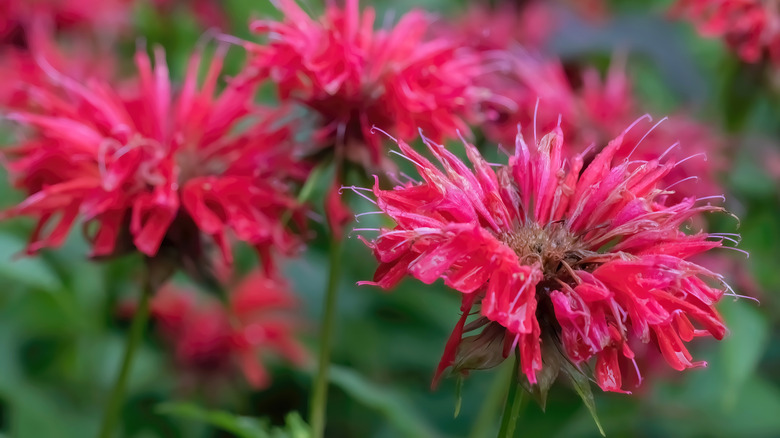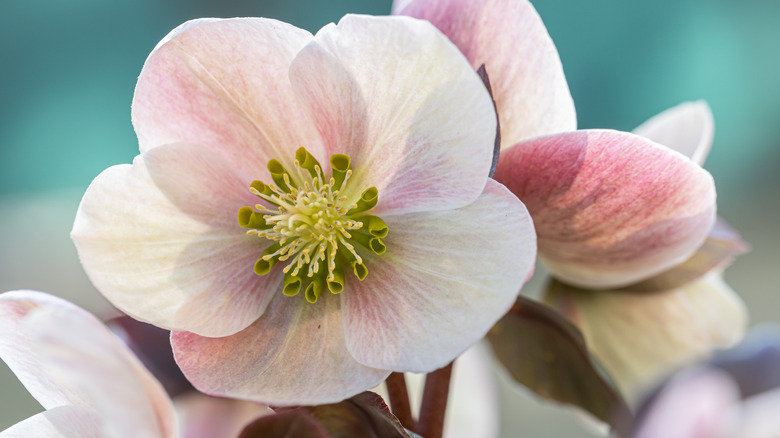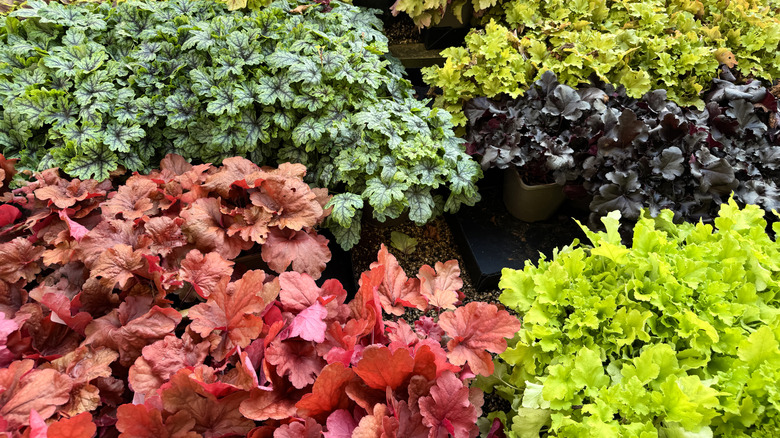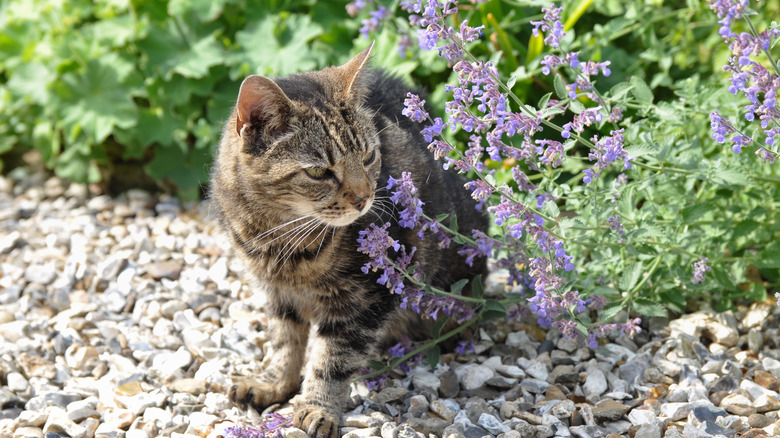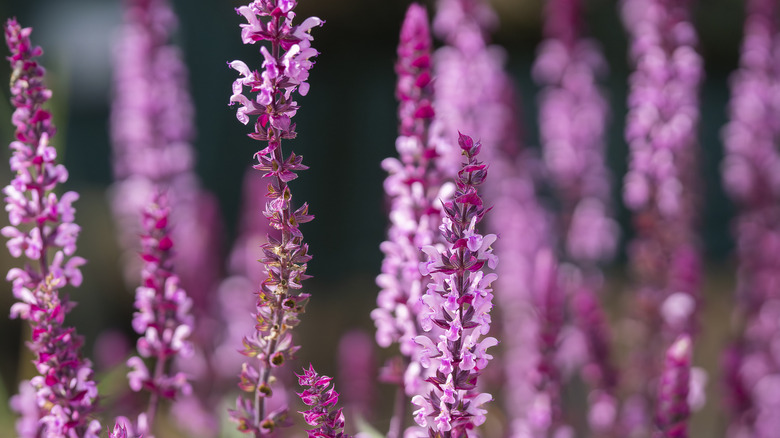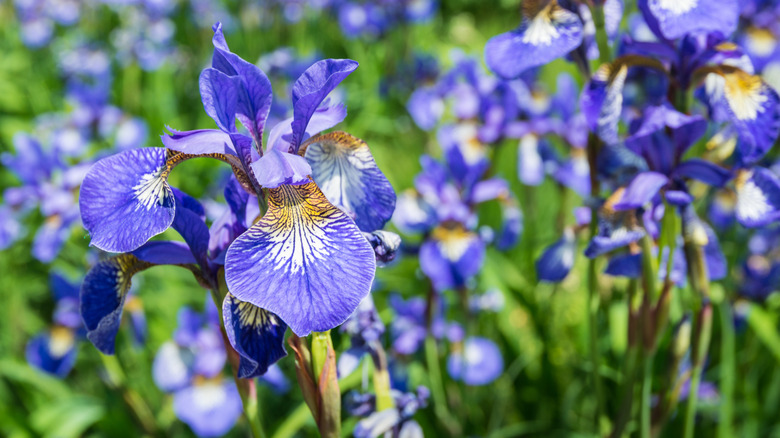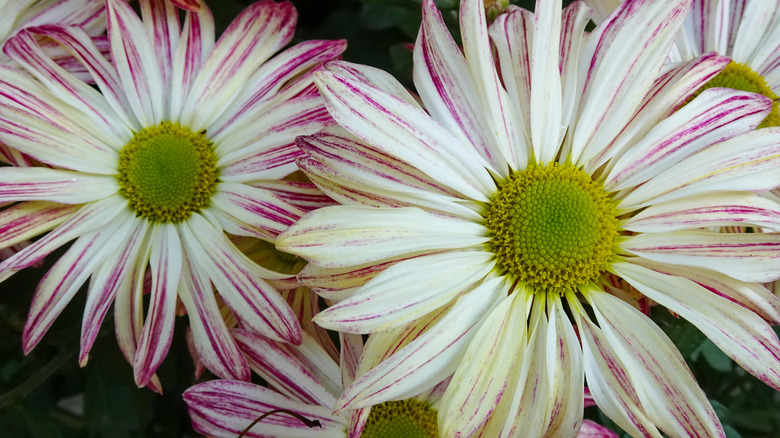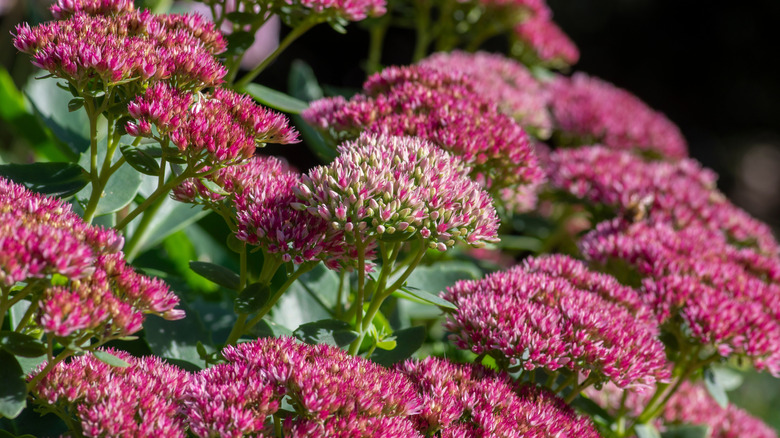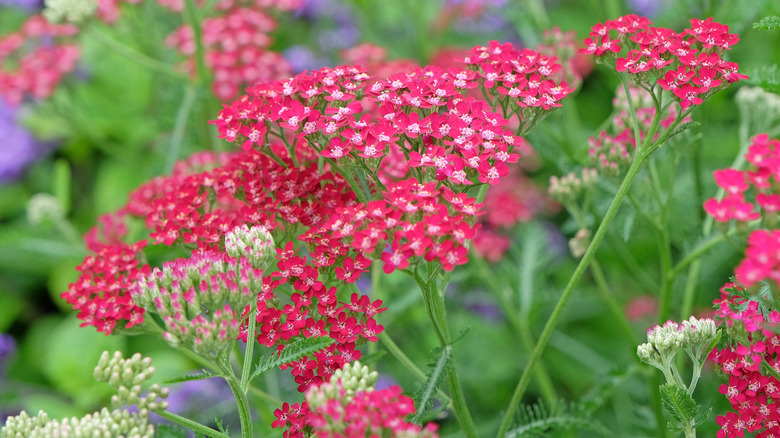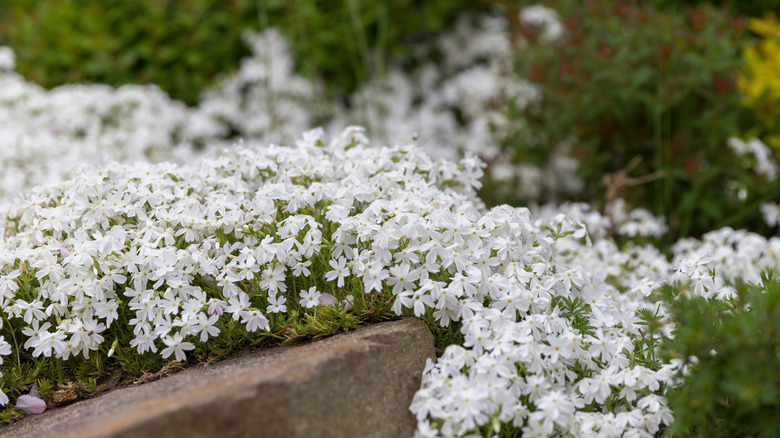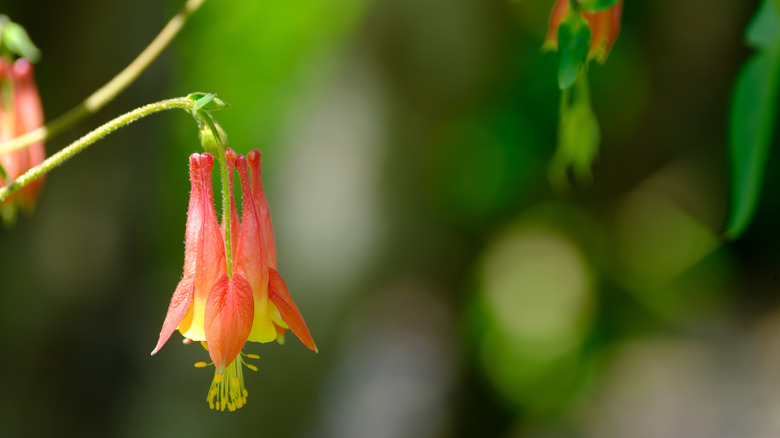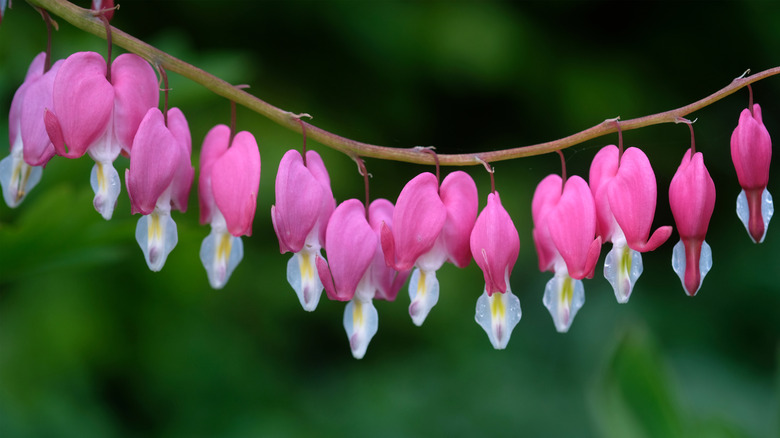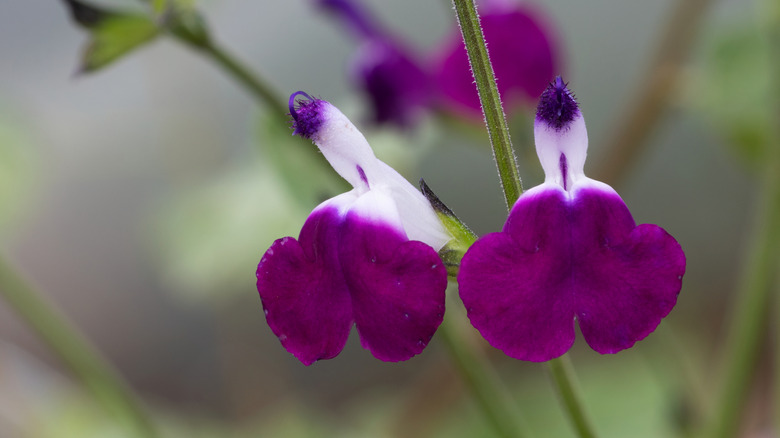18 Of The Best Perennials You Can Still Plant In November
We may receive a commission on purchases made from links.
In much of the U.S., soil stays warmer than the air into November. So, many perennials can keep growing roots without the stress of summer heat. Steady root growth over the course of fall and early winter provides a head start on the next year's bloom and drought resilience, especially if the ground is still workable and not waterlogged or frozen. Planting in the fall also spreads garden work out, so spring isn't so hectic. I'm a master gardener who specializes in permaculture techniques. I plant, lift, and divide all kinds of things during this time so they can get established before hard frosts hit or it gets too hot in the spring.
Before you dig, confirm your USDA hardiness zone and watch the short-term frost forecast so you can water in plants a few days before a hard freeze. After planting, water to settle the soil and remove air pockets. Keep in mind that correctly mulching in the fall can create stronger plants in the spring. In very cold climates, wait to mulch until after the ground freezes to help prevent freeze–thaw heaving that can push out shallow-rooted crowns. A loose winter mulch shields crowns in windy, exposed sites. And, for newly-planted tender perennials, I like to give a deep mulch to keep soil temperatures higher. To protect roots, I add a collar of chicken wire or netting and fill it with straw, packing it around the base of the plant. With these techniques, you can successfully plant these perennials this November.
Peonies emerge with big, beautiful blooms in spring
Peonies (Paeonia lactiflora) love a fall start. These old-garden favorites have interesting, divided leaves and big, satiny blooms that appear in late spring. You can get single or double blooms in colors ranging from white to pink to bright red. And the sturdy clumps thrive for decades, with minimal fuss.
Dividing and replanting in the fall gives the roots time to knit in before the deep cold, which sets plants up for reliable flowering the following spring. Choose a well-drained spot and avoid soggy soil that can rot the buds ("eyes"). If your soil is heavy, loosen and amend the planting area so excess water can drain away from the crown. Add rough organic matter like straw and compost that will lighten up the soil, reduce stickiness, and improve airflow and drainage.
Set the eyes just 1 to 2 inches below the surface, and leave plenty of space between peony tubers. Planting too deeply can delay or reduce blooming. Make sure you put them in a sunny spot, as peonies bloom best with at least 6 hours of light.
Fall planting allows daylilies to get established
Daylilies (Hemerocallis) have arching, strappy leaves and pretty, trumpet flowers with a long blooming season. They make excellent border fillers and come in a huge variety of colors. Hemerocallis are sturdy, forgiving perennials that handle late-season planting and keep building roots in cool soil, even when other plants are struggling. They adapt to many soils, but you'll get the best show in full sun with good drainage. Fall planting diverts the clump's energy to root production, which helps them to get established before they need energy to produce leaves and flowers in spring.
Space plants 18 to 24 inches apart so mature clumps don't crowd one another, and set the crown at soil level. Ideally, you want to leave a mound in the middle of the hole you dig. Rest the center of the crown in this mound and let the roots spill down the sides, then backfill, water to settle, and top-dress with compost.
Purple coneflower transplants love the cool soil of fall
Echinacea is one of my favorites for its beauty, herbal properties, and benefits for pollinators. Birds and butterflies will flock to your yard for the stunning plant that blooms from early summer to late fall. Purple coneflowers come in pink, purple, and red, and they're unmistakable. You can also get interesting cultivars in other colors, including white ('white swan') and a tropical pastel orange ('summer sky'). Tall, sturdy stems carry bright, bold colored daisy-like petals around a spiky center "cone".
Fall is an excellent time to plant coneflowers so they can establish before the summer hits. Transplants root quickly in cool soil, then they'll reward you with a long bloom season. Once established, coneflowers tolerate dry spells and heat, especially in full sun and well-drained soil.
Plant at the same depth as the nursery container and water deeply. Keep soil evenly moist for the first few weeks while roots spread, then taper back. You can also start them from scratch using a product like Organo Republic Echinacea Seeds Pack without too much trouble. You'll probably find that the plant will self-seed, too, but starting from a nursery plant or a division from a neighbor in November is easier if you're a novice.
Black-eyed Susans build strong roots when planted in fall
Black-eyed Susan is a wonderful companion to purple coneflowers. The cheerful golden daisies with dark centers contrast with the purples and pinks of the echinacea for a riot of color, wherever you plant them. Early-to-mid fall planting helps popular varieties like 'Goldsturm' settle in so it can rebound strongly the following summer. If you plant in late fall, be sure to mulch well and provide frost protection to avoid cold damage and stunting.
Thriving in full sun and well-drained soil, black-eyed Susan will handle short dry periods once established. Cool soil favors new root growth and helps them strengthen before having to deal with summer's dryness and heat. Deadhead spent blooms if you want a neater look, or leave a few seedheads for birds and winter interest. I have to admit, because I prefer to work with nature, I actually like the "wild" look of the winter garden and its brown, unkempt foliage amongst my evergreens. Plus, the hollow dead stems provide a habitat for useful insects like solitary bees.
Threadleaf coreopsis can also benefit from fall planting
Threadleaf coreopsis takes well to fall planting and shrugs off lean soils and summer drought once established, making it a low-care choice for sunny borders. The ferny foliage forms mounds that feature small, bright yellow daisies in the summer after a fall start. Plus, they have a long growing season and bring a carefree, meadowy look to your outdoor space.
Site in full sun and well-drained soil. Avoid wet, rich spots that can cause flopping. Instead, they do well in slightly leaner soils, which is one of the things that makes them so easy to grow. Remember that this plant is rhizomatous, too, so it will spread underground and, unless you have other well-established plants, it will need keeping in check so it doesn't take over the bed.
Establish bee balm so it can beat the summer heat
Another of my favorites, bee balm, is beautiful. And like echinacea, it has impressive herbal properties and is loved by pollinators. Its square stems and aromatic leaves feature whorled blooms in bright reds, pinks, and purples. Hummingbirds and pollinators mob it when it's in flower.
Plant bee balm in the fall so roots establish before summer heat, which is particularly helpful for a plant like this that prefers even moisture and can experience stress in drought. Similarly, it can rot in waterlogged conditions over the winter, so make sure fall plantings are in well-drained spots. It also likes full sun to part shade and consistent moisture in organic-rich soil. Thin or space stems for good airflow to reduce powdery mildew, a common issue on Monarda in humid climates. In cold regions, add winter mulch after the ground freezes to limit frost heave around shallow crowns.
Lenten rose thrives with partial shade and fall planting
Lenten roses are actually members of the buttercup family, and do well with fall planting. They have leathery, evergreen leaves and cup-shaped flowers in colors from cream to near-black. Fall installation of live plants, like Daylily Nursery Store's Mix Lenten Rose Pots, allows them to settle before winter. Site them in part shade with well-drained soil; wet or waterlogged spots can cause crown and root rot. Once established, they are long-lived and resent frequent moving. So, pick a permanent spot from the start, but be aware that they require nutrient-rich conditions to thrive.
Soak the root ball and gently spread the roots if possible. Then, plant it in a large, roomy hole that gives the roots space to spread. Make sure the crown is at the soil level, as planting it too deep can reduce blooms. Note that these are deep rooters, so unless you live in a particularly cold climate, you can add a deep layer of mulch before frosts without worrying about heave. Remove old foliage in late winter to showcase flowers and reduce foliar disease on emerging growth.
Coral bells are beautiful evergreen perennials
Heuchera handles fall planting well but is prone to frost heave during its first year in the ground. This is because the crowns are shallow, and it takes a while for the roots to anchor them. Plant in part shade with well-drained soil. Many modern hybrids also tolerate brighter exposures if the soil doesn't stay too wet. Heuchera villosa hybrids, such as 'Southern Comfort' or 'Georgia Peach,' are particularly popular for sunnier locations. Set crowns at soil level and avoid heavy, waterlogged sites to prevent rot.
Scalloped leaves in shades from lime and amber to burgundy and near-black make lovely year-round mounds of color. Airy wands of tiny bell flowers rise above the foliage in late spring for a delicate accent. Coral bells have shallow roots and can tolerate dry and shady conditions unsuitable for other plants. So, they're great for planting in shady spots like beneath tree canopies.
Catmint establishes fast in cool weather
The lavender flowers that splay outward and the grey-green foliage of Nepeta soften border edges, making it a great choice for cottage gardens. Catmint is tough and establishes fast in cool weather, so late-season planting is practical in well-drained beds. Once rooted, it's heat- and drought-tolerant and a reliable early-summer bloomer in full sun. Catnip plants are simple to care for and require minimal maintenance. Shear the plant by about one-third after the first flush of flowers to tidy the mound and encourage a quick rebloom.
There are a couple of things to remember about catmint. Firstly, it's a member of the mint family, so it will spread rapidly if you don't keep it in check. So, only plant it in containers or amongst tough, established plants that it can't choke out. Secondly, it will attract cats to your garden, because it's fresh catnip. But that's not necessarily a bad thing, as cats are awesome for rodent control.
Plant woodland/perennial salvia in fall to for spring blooms
I like salvias because they aren't generally appealing to deer or rabbits. Plus, their vibrant upright spikes of violet, blue, pink, and white bring texture and interest to borders and beds. Perennial salvias can go in during fall wherever there's full sun and average, well-drained soil, as soggy conditions increase the risk of crown rot.
Many cultivars, like 'Caradonna,' produce dense spikes in late spring and can rebloom if you lightly prune them after the first flush of flowers dies back. Avoid over-fertilizing, which can lead to floppy growth, as salvia doesn't like too many nutrients. So it's perfect for spots that struggle to support heavy-feeding plants. These hardy perennials will bloom with minimal intervention for many years.
Siberian iris is ideal to divide in late fall
Siberian iris has elegant, grass-like leaves and produces beautiful, beardless iris flowers in late spring. Some varieties, like 'Caesar's Brother,' reach over 3 feet in height. Flowers range in color from white to deep blue and purple. Compared with bearded iris, this species tolerates heavier, moister soils and offers graceful, grass-like foliage that stays attractive through the season.
These hardy perennials are easy to grow and, once established, can cope with some dry periods. Late fall is a great time for dividing and planting Siberian iris, especially container varieties, so rhizomes can establish before winter really sets in. You do want to get them in the ground a couple of weeks before the first hard frost for best results, though.
Shasta daisies transplant well in cool weather
Shasta daisies are vigorous, hardy perennials that form clumps and produce large (up to 4" across), cheerful yellow or white daisy-like flowers from early summer through autumn. Some varieties have daisy-like petals while others have quilled or frilled petals, like Leucanthemum x superbum 'Old Court'. They transplant well in cool weather. Fall planting helps roots form for a strong spring push and midsummer bloom.
Shasta daisies prefer full sun and well-drained, average garden soil. Many varieties, especially taller ones like 'Becky' that reach up to 4', make reliable cut flowers. As with other perennials, set plants at the same depth as the pot and avoid burying crowns too deeply. Divide clumps every 3 years or so if flowering declines or centers die out.
Showy stonecrop grows well from fall planting in well-draining soil
Until recently known as a Sedum, showy stonecrop has grey-green to purple leaves and a clumping habit. It produces late-season blooms that pollinators love, so it's an important addition to wildlife gardens. The dried seed heads are also attractive and provide visual interest over winter.
Most cultivars, including 'Autumn Joy', are easy to plant in the fall where drainage is good, as the fleshy roots dislike staying wet, especially in winter. Overly rich or wet conditions can cause flop or rot, so avoid heavy fertilizing and waterlogged beds. Full sun and lean, well-drained soil produce sturdy stems and flower heads that age from pink to russet. Once established, these tough little plants are drought-tolerant, so they're a smart choice for dry patches.
Common yarrow can handle fall plantings a few weeks before the first frost
Yarrow has feathery, aromatic foliage and flowers in white, yellow, and pink. It handles heat and drought after rooting in and spreads slowly by rhizomes, producing countless tiny flowers. I grow yarrow for the pollinators and its medicinal properties, but also because it can tolerate poor soil. So, it's great for bringing life to challenging areas while I work to rebuild soil health.
Yarrow thrives in sunny, dry sites and requires little maintenance once established, making it a great low-care choice for November planting in warmer zones. I say this because, ideally, you need to plant yarrow six weeks before the first hard frost in your region. I've also successfully planted large potted yarrows outdoors just a couple of weeks before the first frost, but in a sheltered, warm spot in my garden. And I provided lots of mulch (raw sheep fleece topped with straw) and frost blankets to keep temperatures steady.
Plant moss phlox a month before the first frost
Moss phlox is a hardy evergreen perennial that produces a huge amount of pretty little flowers in late spring and early summer, ranging from whites to pastel pinks and purples. The foliage spreads in dense mats, making it a great choice as year-round ground cover. It prefers full sun and well-drained, sandy or gravelly soil to avoid root rot. Although it does require good drainage, it's tolerant of drought and nutrient-poor soils.
You can plant creeping phlox in November, but it needs at least a couple of weeks (ideally a month) before the first hard frost to get established, as it has a shallow root system. If you're worried, provide frost protection to keep soil temperatures a little higher until the phlox roots itself. Space plants 12 to 18 inches apart to allow the mats to knit without crowding one another.
Sew Eastern red columbine seed in fall for natural stratification
The nodding red and yellow flowers of the eastern red columbine are distinctive and attractive in spring and early summer. They're an important food source for early pollinators and nectar eaters, too. This plant is a woodland wildflower and a member of the buttercup family.
Eastern red columbine is easy from November-sown seed because winter cold provides natural stratification, boosting spring germination. Transplants set in fall also root well in cool soil and flower the following season, with colorful blooms that feed early hummingbirds. This hardy perennial prefers part shade, light soil, and struggles in nutrient-rich areas.
Bleeding heart is hardy to Zone 2 and handles late season planting
From a purely ornamental perspective, bleeding heart is one of my favorite cottage garden perennials. The graceful, arching stems and the pendant, heart-shaped flowers in pinks, reds, and whites are just so eye-catching when they bloom in late spring. They're also very tolerant of a variety of conditions and require minimal maintenance once they're established. Divide bleeding hearts every 3 to 5 years to keep them in the best shape.
Hardy to roughly Zone 2, bleeding heart handles late-season planting as long as the soil is still workable. It prefers part shade and humus-rich, well-drained soil, which suits its cool-season growth and summer dormancy. Fall planting lets roots settle so their flowers appear on schedule in early spring. Allow foliage to yellow naturally after blooming finishes to recharge the roots for next year.
Autumn sage enjoys November planting in warm areas
Autumn sage is a compact, woody perennial with small, aromatic leaves and tubular flowers in reds, corals, pinks, and whites. It blooms over a long season in warm climates, right until the first frosts, and draws bees, butterflies, and hummingbirds. It's also evergreen in milder areas. Unlike culinary sage, this particular salvia is short, compact, and bushy, so it's a good choice for smaller spaces and containers.
In warm regions, autumn sage benefits from November planting so roots establish before summer heat, which boosts drought resilience and spring bloom. It prefers full sun and well-drained soil and needs minimal maintenance. Good drainage is critical as wet roots result in crown problems and rot.
